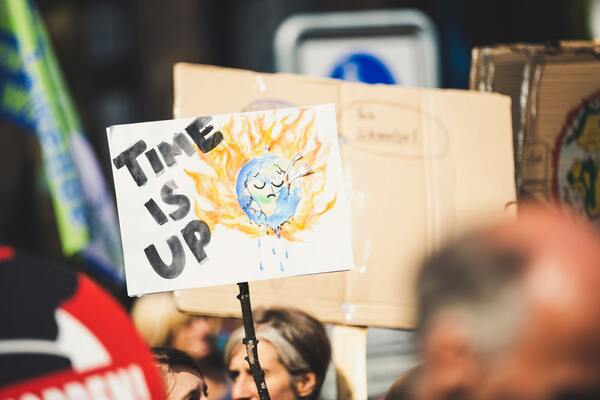Doug Heguy has 35 years development experience in the energy industry and is a former research fellow at the University of Texas LBJ School of Public Policy.
This blog post is second in a series on U.S. energy policy.
In the first article in this series, I described how using the UN’s own climate change models the world, including the United States, is on a path to spending trillions of dollars to fight climate change. Despite this massive spending, global warming is still expected to increase by 6.9 degrees F by 2100. This prediction includes the “whopping” improvement of .5 degrees those trillions of dollars are expected to buy. The US is engaged in hugely ineffective and wasteful energy policy.
In this article, we are going to show that much of what we think we know about climate change is the product of climate alarmism and is incorrect. Let’s address evidence of alarming climate messaging and what is reported by the UN and the US Global Change Research Program.
It seems that almost every storm that causes significant damage reported in the mainstream media includes a reference to climate change as a contributing factor. This is done without evidence or context. Estimates of storm damage in economic terms are not clear evidence that storms are getting stronger. More often, the increase in the value of storm damage over time reflects more people moving into storm-prone areas and building more expensive homes.
Furthermore, a 2017 US Global Change Research Program (USGCRP) study declined to relate increased risk of flooding due to climate change stating, “It is far from clear when any future impact from climate on flooding will be detectable.”
In fact, both the 2017 USGCRP and the 2013 Intergovernmental Panel on Climate Change (IPCC) reports failed to find a global increase in tropical storm activity due to the increase in temperature. The 2013 report stated, “Current datasets indicate no significant observed trends in global tropical cyclone frequency over the past century.” The 2017 USGCRP reported, “The historical Atlantic hurricane frequency record does not provide compelling evidence for a substantial greenhouse warming-induced long-term increase.”
Ignoring the ability of humans to adapt to change can result in huge exaggerations of climate change risk. A 2019 report stated that 187 million people could be forced to move in the unlikely event that no one does anything in the next eighty years to adapt to the dramatic rises in the sea level. This is a huge caveat, and one that bears no resemblance to reality. Under more reasonable assumptions, the predicted number of people falls to 300,000 people, 0.16% of the exaggerated headline number.
Examples of adaptation to mitigate the impact of climate change include:
· Air conditioning to withstand heat waves
· Modifying building codes to build stronger structures to withstand stronger storms
· Improving drainage, building dams, levees, and surge basins to protect against flooding
· Location changes, to build away from flood prone areas
Adaptation in agriculture includes:
· Changing planting and harvesting times
· Modifying seeds
· Changing crops
· Changing farm location
Our ability to adapt to climate change are obvious and simpleminded, and much more effective than trying to fight the effects of climate change by reducing carbon emissions. Any projection that fails to include the mitigating effects of adaptation is using faulty logic for the sake of getting an attention-grabbing headline.
The Truth
Global warming will have a negative impact on our planet, but there are some welcome offsets that help mitigate the bad news. For instance, there will be more heat-related deaths due to global warming. However, a 2015 study of 74 million deaths around the world showed that deaths related to cold were 15 times higher than heat-related deaths. This suggests rising temperatures will have a bigger impact on reducing cold-related deaths than the increase in heat-related deaths.
Carbon dioxide, a major contributor to global warming, has a mitigating effect as it also has a fertilizer effect on plants, which is why commercial growers pump carbon dioxide into greenhouses. A recent satellite study showed that half of the world’s vegetated areas were getting greener, while only 4% of brown areas were getting browner.
With regard to drought, a 2013 IPCC report found that, “There is low confidence in a global-scale observed trend in drought.” Similarly, forest fires are more related to the presence of human activity, such as building new homes in fire-prone areas than climate change.
Convention of States
It is hard to imagine a worse use of government resources than spending trillions of dollars on a climate program producing an immeasurable result, and worse, basing it on bad information. A Convention of States is the path to adding amendments to the U.S. Constitution that can force accountability of our elected representatives in Washington, D.C. to prioritize the funding of programs consistent with the public will. In the process, elected officials must educate themselves and discuss the cost and benefits of programs in the context of other government programs. This is not happening now.


